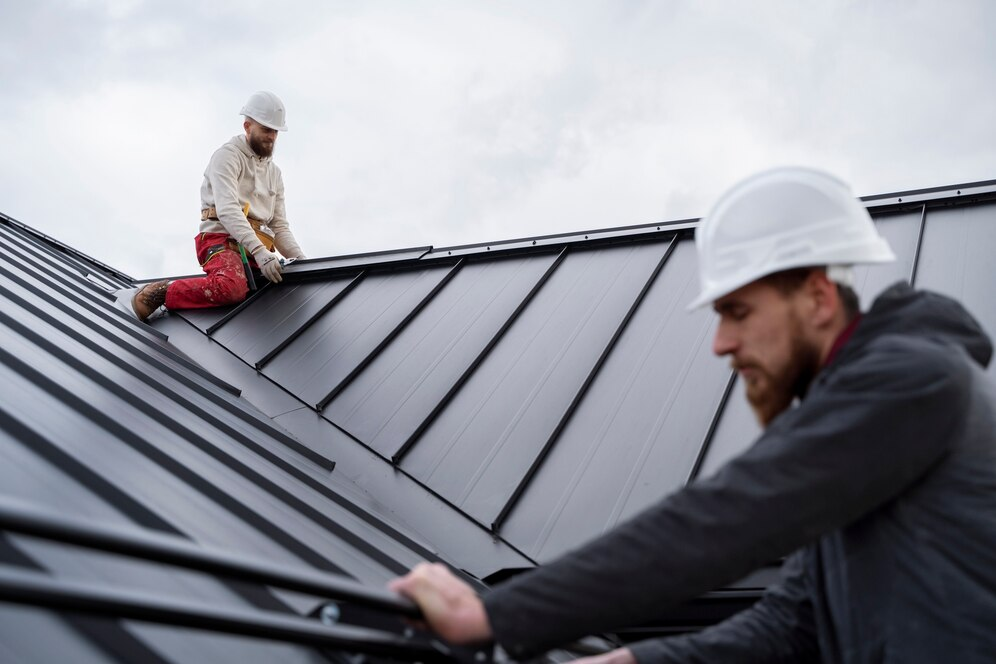When it comes to maintaining and enhancing the structural integrity and aesthetic appeal of commercial and residential properties, roofing solutions play a crucial role. Among the various roofing options available, flat roof installation and rubber roof repair are popular choices due to their durability, cost-effectiveness, and ease of maintenance. This article delves into the benefits and processes involved in flat roof installation and rubber roof repair, providing a comprehensive overview of these essential roofing solutions.
Understanding Flat Roof Installation
Benefits of Flat Roofs
Flat roofs are a common choice for commercial buildings, industrial facilities, and modern residential homes. They offer several advantages:
Cost-Effectiveness
Flat roofs are generally less expensive to install than pitched roofs. The materials and labor costs are lower, making them a budget-friendly option for large commercial spaces.
Ease of Maintenance
The accessibility of flat roofs makes maintenance tasks, such as cleaning gutters and inspecting for damage, more manageable. This can prolong the roof’s lifespan and reduce repair costs.
Space Utilization
Flat roofs provide additional usable space, which can be utilized for HVAC units, solar panels, or even rooftop gardens. This can enhance the functionality and efficiency of the building.
Modern Aesthetics
Flat roofs contribute to a sleek, contemporary appearance, which is particularly appealing for modern architectural designs. They offer a minimalist look that can complement various building styles.
Flat Roof Installation Process
Preparation
The first step in flat roof installation is preparing the existing roof structure. This involves cleaning the surface, removing any debris, and ensuring the underlying structure is sound.
Insulation
Insulation is crucial for energy efficiency and temperature regulation. Insulation boards are installed to provide a thermal barrier, reducing energy costs and enhancing indoor comfort.
Membrane Application
The roofing membrane is then applied over the insulation. There are several types of membranes, including EPDM (ethylene propylene diene terpolymer), TPO (thermoplastic olefin), and PVC (polyvinyl chloride). Each type has its benefits, such as flexibility, durability, and resistance to UV rays.
Sealing and Finishing
- The final step involves sealing the membrane seams and applying a protective coating if necessary. This ensures the roof is watertight and can withstand various weather conditions.
Exploring Rubber Roof Repair
Advantages of Rubber Roofs
Rubber roofs, particularly EPDM roofs, are renowned for their durability and flexibility. They are commonly used for flat and low-slope roofs and offer several benefits:
Longevity
Rubber roofs can last up to 50 years with proper maintenance, making them a long-term investment for property owners.
Weather Resistance
EPDM rubber roofs are highly resistant to extreme temperatures, UV radiation, and harsh weather conditions. This makes them ideal for various climates.
Eco-Friendly
Rubber roofing materials are often made from recycled materials and can be recycled at the end of their lifespan. This reduces environmental impact and promotes sustainability.
Cost-Effective Repairs
Rubber roof repair is relatively straightforward and cost-effective. Small damages can be patched without the need for extensive replacements, saving time and money.
Rubber Roof Repair Process
Inspection
The first step in rubber roof repair is a thorough inspection to identify any damage, such as punctures, tears, or seams coming apart. This helps determine the extent of the repair needed.
Cleaning
The damaged area is cleaned to remove dirt, debris, and any loose material. This ensures proper adhesion of the repair materials.
Applying the Patch
A patch made of rubber roofing material is applied over the damaged area. Adhesive is used to secure the patch, ensuring it bonds well with the existing roof.
Sealing the Edges
The edges of the patch are sealed with a specialized sealant to prevent water infiltration. This step is crucial for maintaining the roof’s watertight integrity.
Final Inspection
After the repair is complete, a final inspection is conducted to ensure the patch is secure and the roof is free from leaks. Regular maintenance checks can help prevent future issues.
Conclusion
Flat roof installation and rubber roof repair are essential components of comprehensive roofing solutions. Both offer unique benefits that enhance the functionality, durability, and aesthetic appeal of buildings. Flat roofs provide cost-effective, easy-to-maintain surfaces with additional space for various uses, while rubber roofs offer longevity, weather resistance, and eco-friendliness. Understanding the processes involved in flat roof installation and rubber roof repair can help property owners make informed decisions, ensuring their roofs remain in excellent condition for years to come. By investing in these roofing solutions, building owners can achieve a balance of practicality and modern design, ultimately adding value to their properties.

